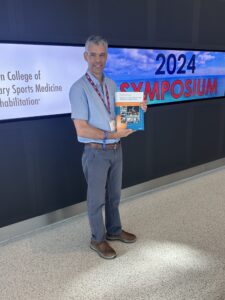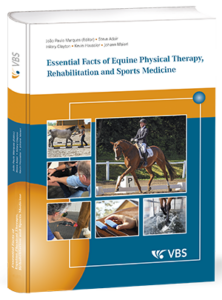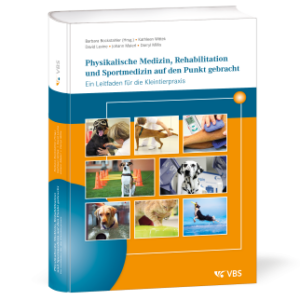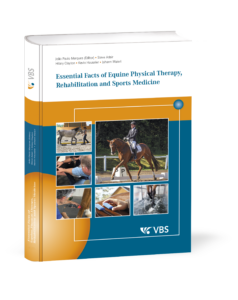Level-up with mesotherapy
Speaker: Dr. Diane Grosjean
on July 1st 2025, 5:30pm (GMT+2)
Email us to Register
Start investing in you and your team!
You are worth it!
Be better than yesterday today and realize you will still not be as good as tomorrow!
CCRP
CERP
CCFT
VMPT
Now available!
Introducing a groundbreaking reference in equine physical therapy, rehabilitation, and sports medicine!
With contributions from over 80 renowned experts, the book is a pinnacle of knowledge in the field. This comprehensive tome is authored by experienced veterinarians and physiotherapists who have contributed significantly to equine health and performance.
João Paulo Marques, the editing author, is not only one of the leading experts in the field. He has spent many years involved with high level sport including different roles in the FEI and at the Olympic Games.
This valuable resource contains also the work of prestigious university professors, representing academic expertise from around the world. It serves as a reference and is a recommended textbook for veterinary students and professionals specializing in physical therapy, rehabilitation, and sports medicine.
Endorsed by numerous universities worldwide, this book resource offers unparalleled insights into equine health and performance. It features an interactive approach to learning, guiding readers through concise texts, essential facts, and scientific highlights. Illustrated with over 1000 images and supplemented by tutorial videos, it provides a dynamic and engaging educational experience to transform the knowledge of worldwide experts into a valuable and comprehensive format.
Whether you are a seasoned veterinarian, vet nurse, or other veterinary professional, a human physical therapist interested in equine rehabilitation, or even a trainer looking to prevent injuries, this book is an indispensable resource. From the athletic horse to the leisure companion, every equine health and performance aspect is covered comprehensively.
Reading and studying from this book promises not just education, but also an immersive journey into the world of equine physical therapy, rehabilitation, and sports medicine.
Take advantage of this essential addition to your professional library!
Dr. Beate Egner
DVM, PhD

We are excited to congratulate J. P. Marques, esteemed editing author of the groundbreaking new reference work “Essential Facts of Equine Physical Therapy, Rehabilitation, and Sport Medicine,” as well as a distinguished member of our CERP faculty, on being appointed as the Equine Physical Therapist Team Leader for the Olympic and Paralympic Games 2024.
Physical medicine, Rehabilitation, and Sports Medicine for Animals
Continuing Professional Development (CPD) is crucial for professional growth, regardless of your current career stage. VAHL offers continuous education opportunities that enhance your capabilities, identify new areas of focus, and keep you updated in the rapidly evolving field of Physiotherapy, Rehabilitation, and Sports Medicine in Animals.
Investing in veterinary CPD is a valuable decision, providing long-term benefits. Consider the advantages of CPD, particularly for your team, as upskilling them is more cost-effective than hiring new employees. Improved skills and competencies contribute to enhanced performance, better treatment outcomes, and positive economic development.







